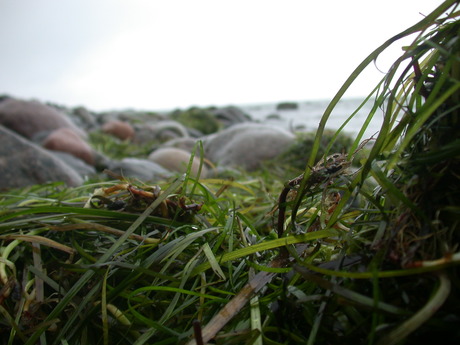Seagrass provides blue carbon reserve

According to a study conducted at Edith Cowan University, more than 150 million tonnes of carbon could be stored in the more than 92,500 square kilometres of seagrass ecosystems that fringe Australia’s coastline - that equates to carbon dioxide storage that may be worth more than $5.2 billion.
Based on a carbon trading price of $35 per tonne in 2020, as predicted by the federal government, these so-called blue carbon reserves could be worth billions of dollars on the international carbon market.
Blue carbon represents the carbon dioxide sequestered in coastal plant ecosystems including seagrass, mangroves, coral reefs and salt marshes. This study is one of the first to examine the blue carbon storage capacity of Australia’s seagrass meadows following similar research in the Mediterranean.
Professor Paul Lavery, director of the Centre for Marine Ecosystems Research at ECU and lead researcher of the project, said the research showed it was vital Australia’s fragile seagrass meadows are preserved.
“It’s essentially a win, win, win scenario. A win for the economy, a win for conservation and a win for society through the services the ecosystem provides,” he said.
As well as capturing and storing a huge amount of carbon, seagrass meadows provide habitat and food for dugongs, sea turtles fish, prawns, seahorses and stingrays. They also generate a large amount of oxygen, improve water quality and their roots stabilise the sediment below them, thus protecting coastlines.
But seagrass is notoriously hard to propagate and Lavery said it isn’t as simple as going out and planting new meadows of the seagrass. Seagrasses are also vulnerable to nutrient pollution, dredging and other coastal development.
“What is imperative at the moment is to preserve what we have,” Lavery said of this flowering plant that has adapted to grow in shallow sheltered seawater.
The ECU project analysed the top 24 centimetres of sediment at 17 different locations around Australia encompassing 10 different seagrass species and a variety of ecosystems.
The research found seagrass meadows were accumulating carbon at a rate more than three times faster than a typical tropical rainforest (often touted as the lungs of the world). However, other estimates have estimated the rate to be as much as 10 times faster.
The research estimated Australian seagrass meadows are absorbing around 1 million tonnes of carbon each year, equivalent to $35 million in carbon credits using the 2020 carbon price estimate.
Professor Lavery said while the rate at which seagrass meadows are absorbing carbon sounds high, 1 million tonnes per year accounts for only around 0.6% of Australia’s annual emissions.
However, he said the rate could be much higher and more research is needed to quantify the true potential of Australia’s seagrass.
The next step is to develop an efficient way to find out how much carbon is being absorbed and how much is stored, and move the resource into a carbon trading market. This question is the subject of ongoing research in Australia and Europe which Professor Lavery is involved with.
The research has been published in the journal PLOS ONE.
Specially designed peptides can treat complex diseases
Two separate research teams have found ways to create short chains of amino acids, termed...
Exposure to aircraft noise linked to poor heart function
People who live close to airports could be at greater risk of poor heart function, increasing the...
Predicting the impact of protein mutations with simple maths
Researchers have discovered that the impact of mutations on protein stability is more predictable...



